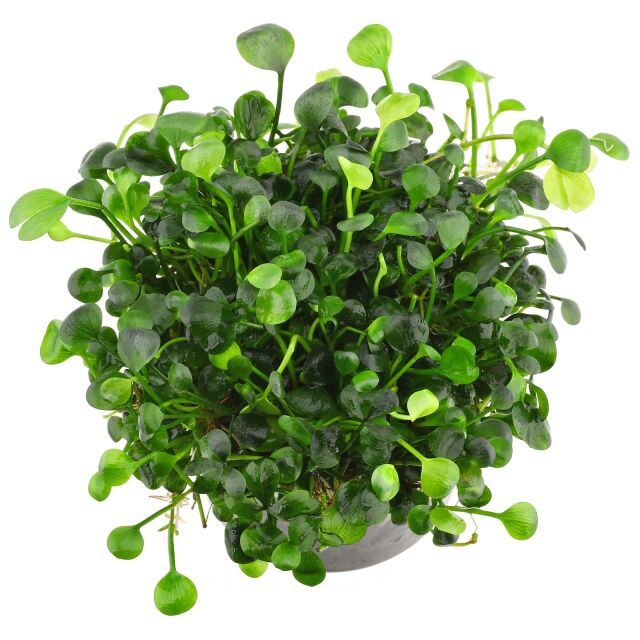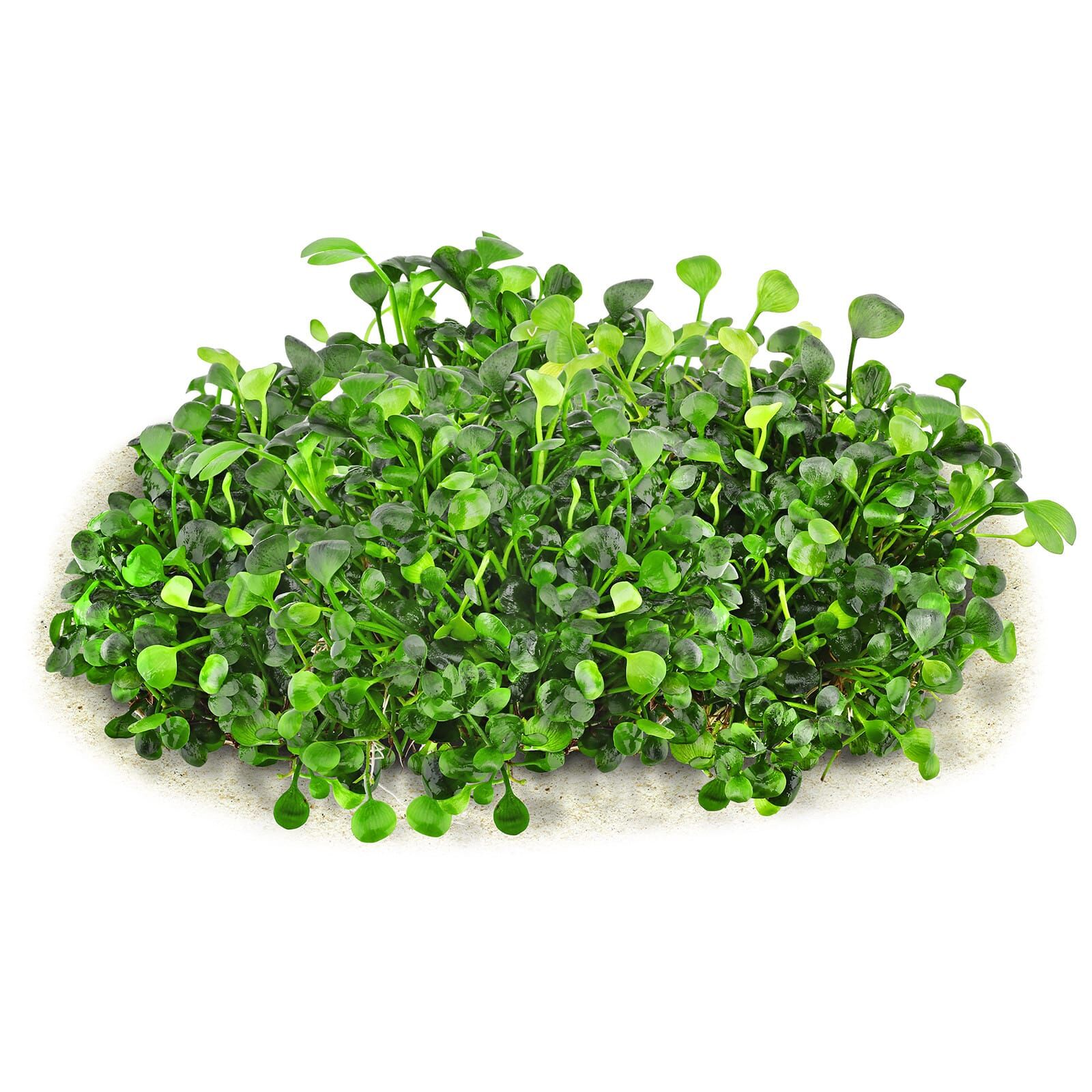Rough waterclover







Marsilea hirsuta
Rough waterclover
- Robust ground covering plant
- Submersed leaves are roundish, on a stalk
- Forms a 2-10 cm high and close carpet
- New leafes with brown color
Item question
We’re here for you!
Please enter your question and e-mail and we’ll contact you as soon as possible. It usually takes us up to 24 hours during business days to respond.
Thank you for your question!
Thank you, we’ll get in touch!
Close window
You already sent us a question.
Please wait a few minutes
Description
The Rough waterclover, Marsilea hirsuta, is a recommended, fairly undemanding ground cover in its underwater form. It is native to Australia and, like other waterclover species, is known there as "Nardoo". Like other Marsilea species, M. hirsuta is an amphibious fern in floodplains, swamps, banks, etc. in nature. Waterclover species form a carpet of long creeping, branched rhizomes. In the terrestrial form, "lucky clover" leaves with long petioles and four leaflets grow. Marsilea hirsuta is usually sold in this emersed form.
After some acclimatisation time, new shoots with much shorter submerged leaves grow in the aquarium, while the old emersed leaves slowly die off and can be cut off. The submerged leaves are usually undivided and roundish, like large Glossostigma leaves. Occasionally, two-, three- or four-part leaves of different heights also appear. The carpet gets about 2 to 10 cm high. Marsilea hirsuta spreads relatively quickly in the aquarium with its runners.
Marsilea hirsuta is a robust aquarium plant that makes no special demands on the water chemistry and can cope with relatively little light. However, it develops best with at least moderate light and a complete supply of nutrients, including via the substrate. The addition of CO2 is not absolutely necessary, but it does promote growth.
After removing the rockwool, it is best to divide emersed potted plants into several pieces and place them in the substrate at some distance from each other. When rhizome shoots with submerged leaves develop, the old emersed leaves gradually die off and can be cut off. Tissue-cultured plants are also divided into several pieces and planted after washing off the culture medium.
Over time, the rhizomes creeping in the soil or above ground grow together to form a carpet. Occasional cutting prevents the carpet from becoming too thick and eventually detaching from the ground. Propagation is easy by cutting off pieces of rhizome and sticking them in the ground.
Particularly in Marsilea from in vitro (tissue culture) cups, new leaves have a brownish colour. They are by no means rotten.
Marsilea hirsuta has larger leaves than the Dwarf waterclover, Marsilea crenata, and is particularly recommended as a ground cover in larger aquaria. The medium and sometimes dark green carpet is accentuated by the reddish-brown colour of the young leaves. Its robustness and rather low light requirement make this Australian waterclover species a versatile foreground plant. As an emersed plant, its "lucky clover" leaves make it an attractive element in paludarium and wabi-kusa plantings.
The water clover Marsilea hirsuta is widely spread in Australia. It is mostly found in marshes and floodplains.
In trade, you often see the names M. crenata, M. hirsuta, M. exarata, M. drummondii and M. quadrifolia, however, it is not sure whether the respective plant was identified correctly. Most species of the genus Marsilea can only safely be identified in their emersed form by means of their sporocarps (spore-containing fruit).
Please see Marsilea spp.
| Common names | Hansen's Nardoo |
| Synonyms | Marsilea azorica Launert & Paiva |
| Complete botanical name | Marsílea hirsúta R. Br. |
| Family | Marsileaceae |
| Genus | Marsilea |
| Usage | Foreground, ground cover |
| Aquascaping | forms a small-leaved carpet |
| General hardness | 0 - 30°dGH |
| Propagation | Runners, Splitting, cutting off daughter plants |
| Can grow emersed? | yes |
| Source | Flowgrow |
| Common names |
| Hansen's Nardoo |
| Synonyms |
| Marsilea azorica Launert & Paiva |
| Complete botanical name |
| Marsílea hirsúta R. Br. |
| Family |
| Marsileaceae |
| Genus |
| Marsilea |
| Usage |
| Foreground, ground cover |
| Aquascaping |
| forms a small-leaved carpet |
| General hardness |
| 0 - 30°dGH |
| Propagation |
| Runners, Splitting, cutting off daughter plants |
| Can grow emersed? |
| yes |
| Source |
| Flowgrow |
How many plants do I need?
General information
Please choose a variant to see more information.
| Item no. |
|
| EAN | |
| Weight | |
| Shipping weight |
Customers ask customers
You have questions about this product? Ask other customer or our support team about this product!
Customer reviews
15 Reviews
| 5 Stars(11) |
|
| 4 Stars(3) |
|
| 3 Stars(0) |
|
| 2 Stars(1) |
|
| 1 Star(0) |
|

Unursual look with different ish types of leaves on the same plant.
Grows really nice for me even in lower lighting with co2.
Love it!
Arrived in exilent condition.
Thank you!

Ordered 3 of these, and they all arrived in great condition and fast. The packaging was really good, will order more plants from Aquasabi in the future for certain.

Most of the leaves were brown, and Aquasabi says new leaves should be brown, but all the new leaves I have grown under water are green. (read more)